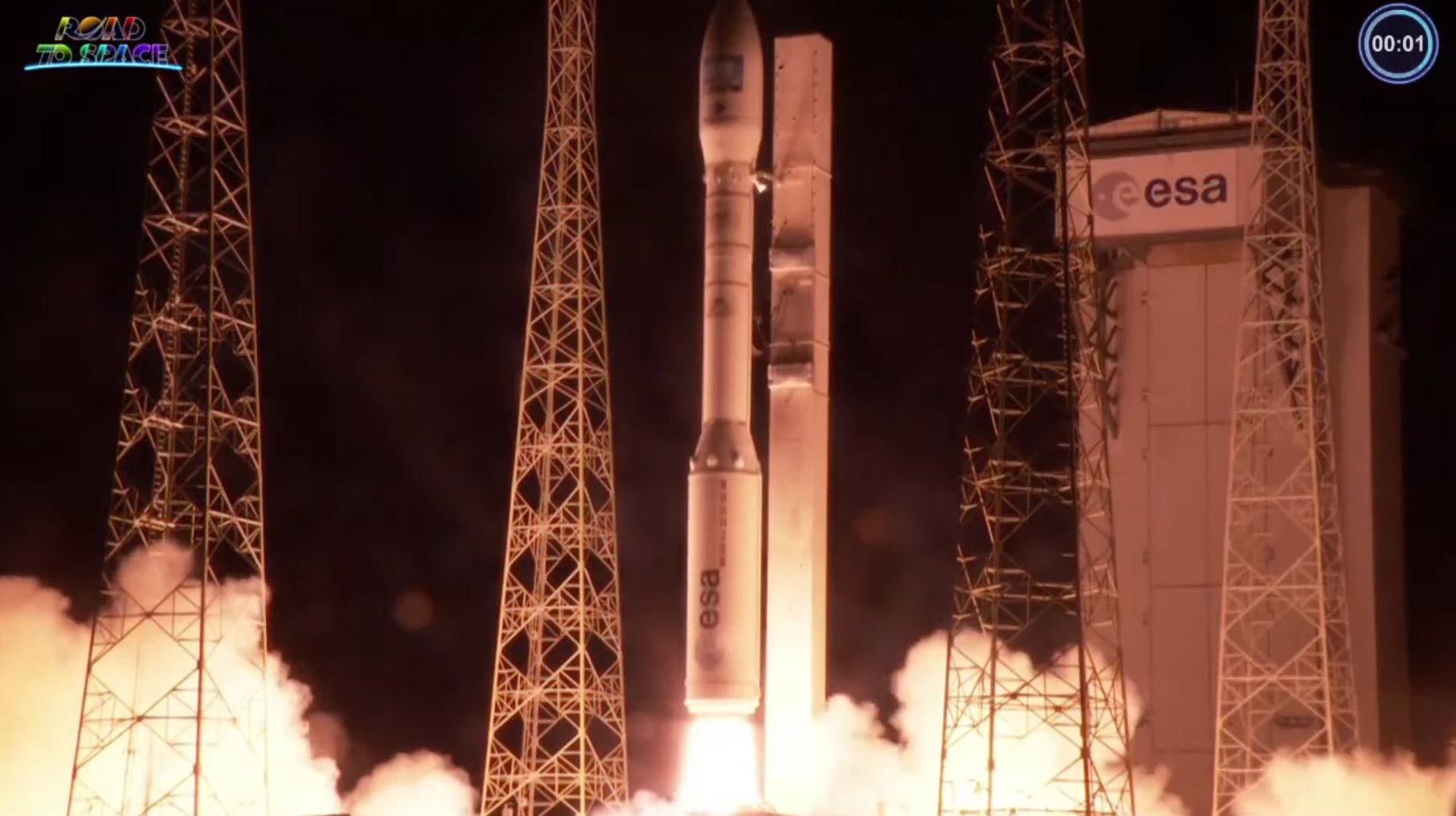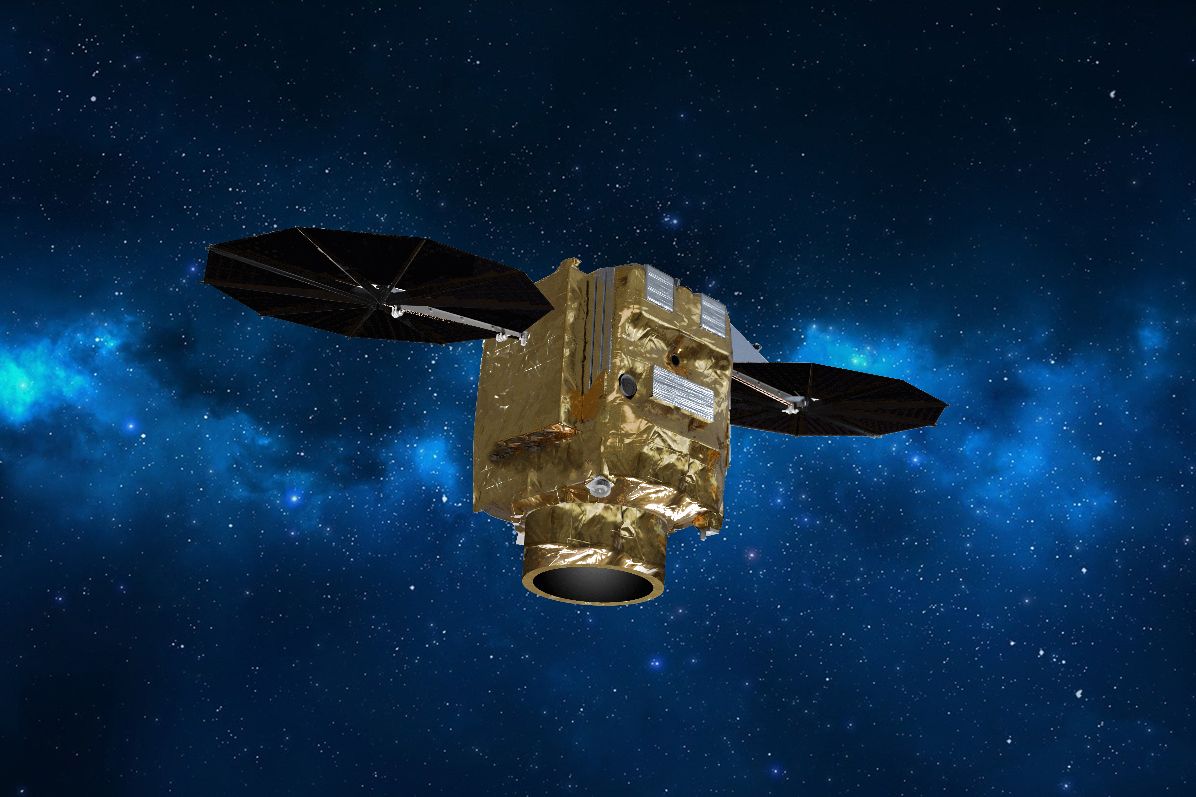Arianespace Vega rocket launches Earth observation satellite and 4 cubesats into orbit
Arianespace launched a new Earth observation satellite for Airbus Monday night (Aug. 16), along with four other tiny satellites.
An Arianespace Vega rocket, designated VV19, launched the Pléiades Neo 4 satellite and a quartet of cubesats from the Guiana Space Center in Kourou, French Guiana in South America at 9:47 p.m. EDT (0147 Aug. 17 GMT).
The rocket carried Pléiades Neo 4 — the second of four very high-resolution satellites to launch as part of Airbus' Pléiades Neo Earth-observing satellite constellation — and four cubesats, called BRO-4, SUNSTORM, LEDSAT and RADCUBE. All of the satellites, comprising a total payload of approximately 2,268 pounds (1,029 kilograms), were delivered into a sun-synchronous orbit, according to Arianespace.
"With this mission, Arianespace demonstrates yet again the incredible versatility of Vega," Arianespace CEO Stéphane Israël said in a statement. "We delivered safely into orbit the second satellite of the innovative Pléiades Neo 4 constellation on behalf of Airbus, alongside 4 auxiliary cubesats for ESA [the European Space Agency] and the French start-up Unseenlabs."
Related: Europe's Vega rocket in photos

The mission marked Arianespace's seventh launch of 2021 and Vega's second launch of 2021, or 19th mission overall, following the launch of Pléiades Neo 3 in April.
The primary payload, Pléiades Neo 4, is the second of four Earth observation satellites for a new satellite constellation built and operated by the German aerospace company Airbus Defence and Space. Pléiades Neo 5 and Pléiades Neo 6 are slated to launch in 2022 to complete the constellation.
Get the Space.com Newsletter
Breaking space news, the latest updates on rocket launches, skywatching events and more!
The Pléiades Neo satellites will offer a higher resolution, greater geolocation accuracy, and twice-a-day revisits for "top-level Earth observation services now and going forward for the next ten years," Arianespace officials said in a mission description.
"In addition, their reactive tasking ability allows urgent acquisitions 30 to 40 minutes following request — which is five times higher than previous satellite constellations — and respond to the most critical situations in near real-time, [which is] very useful for natural disaster[s]."

The Vega rocket will also deploy four scientific spacecraft, three of which belong to the European Space Agency (ESA) and one for Unseenlabs, a European satellite start-up. ESA's three payloads include LEDSAT (or LED-based small SATellite), RADCUBE and SUNSTORM.
LEDSAT will test the use of Light Emitting Diodes (LEDs) to identify and track the satellites while in-orbit, while RADCUBE will be used to demonstrate the use of small satellites for space weather monitoring, and SUNSTORM will use an innovative solar X-ray spectrometer to detect and characterize solar flares, or coronal mass ejections.
The final payload, BRO-4 (Breizh Reconnaissance Orbiter), is the fourth satellite of a maritime surveillance constellation operated by Unseenlabs. This nano-satellite constellation is designed to identify electromagnetic signals from space, allowing Unseenlabs to geolocate and characterize ships at sea. The company expects to launch between 20 and 25 nano-satellites for its constellation by 2025, according to the statement.
Editor's note: This article was originally published on the morning before the launch and updated after liftoff and the successful deployment of the satellites.
Follow Samantha Mathewson @Sam_Ashley13. Follow us on Twitter @Spacedotcom and on Facebook.
Join our Space Forums to keep talking space on the latest missions, night sky and more! And if you have a news tip, correction or comment, let us know at: community@space.com.

Samantha Mathewson joined Space.com as an intern in the summer of 2016. She received a B.A. in Journalism and Environmental Science at the University of New Haven, in Connecticut. Previously, her work has been published in Nature World News. When not writing or reading about science, Samantha enjoys traveling to new places and taking photos! You can follow her on Twitter @Sam_Ashley13.









